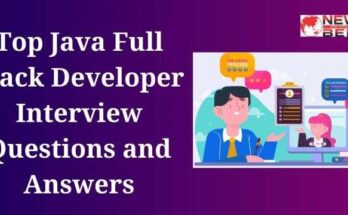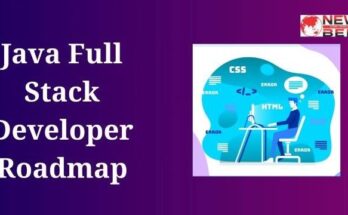Preparing for a data science interview can be a daunting task, as it often involves a wide range of topics and skills. To help you succeed in your data science job interviews, here is a compilation of some top data science interview questions and answers. These questions cover fundamental concepts, technical skills, and practical scenarios that are commonly encountered in data science interviews. By reviewing and practicing these questions and answers, you’ll be better equipped to showcase your expertise and secure that coveted data science position.
Top Data Science Interview Questions and Answers
Certainly! Here is a list of 55 common data science interview questions along with brief answers. Keep in mind that the depth and specificity of your answers may vary depending on the role and the level of the interview. Be prepared to provide detailed responses when necessary:
1. What is Data Science?
- Answer: Data Science is a multidisciplinary field that uses various techniques, algorithms, processes, and systems to extract valuable insights and knowledge from data.
2. Explain the Data Science Workflow.
- Answer: The Data Science workflow typically includes data collection, data cleaning, data exploration, feature engineering, model development, model evaluation, and deployment.
3. What is the Difference Between Supervised & Unsupervised Learning?
- Answer: Supervised learning involves training a model using labeled data, while unsupervised learning deals with unlabeled data and finding patterns or structure within it.
4. What is Overfitting, and How Can You Prevent It?
- Answer: Overfitting occurs when a model learns the training data too well and performs poorly on unseen data. You can prevent it by using techniques like cross-validation, regularization, and collecting more data.
5. Explain the Bias-Variance Tradeoff.
- Answer: The bias-variance tradeoff represents a balance between a model’s ability to fit the training data well (low bias) and its ability to generalize to new, unseen data (low variance).
6. What is Cross-Validation?
- Answer: Cross-validation is a technique used to assess a model’s performance by splitting the data into multiple subsets for training and testing, ensuring a more robust evaluation.
Also, Read This: What is Digital Marketing in Hindi
7. What is Feature Engineering, and why is it important?
- Answer: Feature engineering is the process of selecting, transforming, or creating new features from the raw data to improve a model’s performance. It’s essential for making the data more informative and relevant to the task.
8. Explain the concept of Dimensionality Reduction.
- Answer: Dimensionality reduction is the process of reducing the number of input variables (features) in a dataset while preserving essential information. Techniques like PCA and t-SNE are commonly used for this purpose.
9. What are the main steps in Data Preprocessing?
- Answer: Data preprocessing involves data cleaning, handling missing values, encoding categorical variables, scaling features, and splitting data into training and testing sets.
10. Describe the Curse of Dimensionality.
- Answer: The Curse of Dimensionality refers to the challenges and problems that arise when working with high-dimensional data, including increased computational complexity and the sparsity of data points.
11. What is a Confusion Matrix, and how is it used in classification problems?
- Answer: A confusion matrix is a table used to evaluate the performance of a classification model. It provides information about true positives, true negatives, false positives, and false negatives.
12. What are Precision and Recall, and how do they relate to the F1-score?
- Answer: Precision is the ratio of true positives to the total predicted positives, while recall is the ratio of true positives to the total actual positives. The F1-score is the harmonic mean of precision and recall, balancing both metrics.
13. Explain the ROC curve and AUC in the context of binary classification.
- Answer: The ROC curve (Receiver Operating Characteristic) is a graphical representation of a classifier’s performance at different thresholds. AUC (Area Under the Curve) measures the area under the ROC curve, providing a single-value performance metric.
14. What is Regularization, and why is it used in machine learning models?
- Answer: Regularization is a technique used to prevent overfitting by adding a penalty term to the model’s loss function, discouraging it from fitting the noise in the data. Common regularization methods include L1 (Lasso) and L2 (Ridge) regularization.
15. What is Cross-Entropy Loss, and when is it used in classification problems?
- Answer: Cross-entropy loss, also known as log loss, is a loss function used in classification problems. It measures the dissimilarity between predicted and actual class probabilities.
16. Explain the Bias in Machine Learning.
- Answer: Bias in machine learning refers to the systematic error that occurs when a model consistently predicts outcomes inaccurately, often due to an inappropriate choice of features or assumptions in the model.
17. What is a Decision Tree, and how does it work?
- Answer: A decision tree is a supervised machine learning algorithm that recursively splits data based on feature values, leading to a tree-like structure that can be used for classification or regression.
18. What is Random Forest, and how does it differ from a single Decision Tree?
- Answer: Random Forest is an ensemble learning method that combines multiple decision trees to improve predictive performance and reduce overfitting compared to a single decision tree.
19. Explain Gradient Descent and its variants in the context of optimization.
- Answer: Gradient Descent is an optimization algorithm used to minimize the loss function by iteratively adjusting model parameters in the direction of steepest descent. Variants include Stochastic Gradient Descent (SGD), Mini-batch GD, and Adam.
20. What is K-Means Clustering, and how does it work?
- Answer: K-Means is an unsupervised clustering algorithm that partitions data into K clusters based on similarity. It works by iteratively updating cluster centroids and assigning data points to the nearest centroid.
21. Explain the concept of Deep Learning.
- Answer: Deep Learning is a subset of machine learning that uses neural networks with multiple layers (deep neural networks) to automatically learn hierarchical representations from data, particularly suited for tasks like image recognition and natural language processing.
22. What is Backpropagation, and how does it train neural networks?
- Answer: Backpropagation is an algorithm used to train neural networks by iteratively adjusting weights and biases in reverse order from the output layer to the input layer, minimizing the error between predicted and actual values.
23. What are Recurrent Neural Networks (RNNs), and when are they used?
- Answer: RNNs are a type of neural network architecture designed for sequential data. They have recurrent connections that allow them to capture temporal dependencies, making them suitable for tasks like time series prediction and natural language processing.
24. What is Transfer Learning, and how is it applied in deep learning?
- Answer: Transfer learning is a technique where a pre-trained neural network is used as a starting point for a new task, typically fine-tuning the model’s weights on a smaller dataset. It’s useful for tasks with limited data.
25. Explain the concept of Natural Language Processing (NLP).
- Answer: NLP is a field of artificial intelligence that focuses on the interaction between computers and human language. It includes tasks like text classification, sentiment analysis, machine translation, and text generation.
26. What is Word Embedding, and why is it important in NLP?
- Answer: Word embedding is a technique that represents words as dense vectors in a continuous space. It’s essential in NLP to capture semantic relationships between words and improve the performance of models.
27. What are LSTM and GRU, and how do they differ from standard RNNs?
- Answer: LSTM (Long Short-Term Memory) and GRU (Gated Recurrent Unit) are specialized RNN architectures designed to mitigate the vanishing gradient problem and capture long-term dependencies more effectively than standard RNNs.
28. Explain the concept of Bias in Machine Learning Models.
- Answer: Bias in machine learning models refers to the systematic error that occurs when a model consistently makes predictions that are inaccurate or unfair, often due to biased training data or features.
29. What is Cross-Validation, and why is it important in model evaluation?
- Answer: Cross-validation is a technique used to assess a model’s performance by splitting the data into multiple subsets for training and testing. It provides a more reliable estimate of a model’s generalization performance.
30. Describe the steps involved in building a recommendation system.
- Answer: Building a recommendation system typically involves data collection, data preprocessing, user-item matrix creation, selecting a recommendation algorithm (e.g., collaborative filtering or content-based), training the model, and evaluating its performance.
31. What is the curse of dimensionality in the context of machine learning?
- Answer: The curse of dimensionality refers to the problems and challenges that arise when working with high-dimensional data, including increased computational complexity, data sparsity, and the need for more data points to maintain model performance.
32. What is an imbalanced dataset, and how do you handle it?
- Answer: An imbalanced dataset occurs when one class significantly outnumbers the other(s). Techniques to handle it include resampling (oversampling or undersampling), using different evaluation metrics, and using specialized algorithms like SMOTE.
33. Explain the concept of A/B testing and its relevance in data science.
- Answer: A/B testing is a method for comparing two versions (A and B) of a webpage, feature, or product to determine which one performs better. It’s widely used in data science to assess the impact of changes and make data-driven decisions.
34. What is the difference between correlation and causation?
- Answer: Correlation indicates a statistical relationship between two variables, while causation implies that one variable causes changes in another. Correlation does not imply causation, and establishing causation requires controlled experiments.
35. What are some common data preprocessing techniques for handling missing data?
- Answer: Common techniques for handling missing data include imputation (e.g., filling missing values with the mean or median), removal of rows or columns with missing data, and using advanced imputation methods like K-nearest neighbors (KNN).
36. What is One-Hot Encoding, and when is it used in data preprocessing?
- Answer: One-Hot Encoding is a technique used to convert categorical variables into binary vectors, where each category is represented by a binary value (0 or 1). It’s used when dealing with categorical data in machine learning models.
37. What is the difference between Type I and Type II errors?
- Answer: Type I error occurs when a null hypothesis is rejected when it is true (false positive), while Type II error occurs when a null hypothesis is not rejected when it is false (false negative).
38. Explain the concept of Outliers in data analysis, and how can you detect them?
- Answer: Outliers are data points that significantly differ from the majority of the data. They can be detected using statistical methods like the IQR (Interquartile Range) or visualization techniques like box plots.
39. What is Cross-Entropy Loss, and when is it used in classification problems?
- Answer: Cross-entropy loss, also known as log loss, is a loss function used in classification problems to measure the dissimilarity between predicted class probabilities and actual class labels.
40. What is the difference between Bagging and Boosting in ensemble learning?
- Answer: Bagging (Bootstrap Aggregating) combines multiple models by averaging or voting to reduce variance, while Boosting combines models sequentially, giving more weight to previously misclassified samples to improve accuracy.
41. What is the purpose of Principal Component Analysis (PCA), and how does it work?
- Answer: PCA is used for dimensionality reduction by transforming data into a lower-dimensional space while preserving as much variance as possible. It works by finding orthogonal axes (principal components) that capture the maximum variance in the data.
42. What are Hyperparameters in machine learning, and how are they different from model parameters?
- Answer: Hyperparameters are settings that are not learned from the data but are set before training. They control aspects of the training process, such as learning rate or the number of hidden layers. Model parameters, on the other hand, are learned during training.
43. What is the purpose of a Learning Rate in gradient descent algorithms?
- Answer: The learning rate controls the step size in gradient descent algorithms, determining how quickly the model converges to a solution. Setting it too high may lead to overshooting, while setting it too low may result in slow convergence.
44. Explain the concept of Bias-Variance Tradeoff in machine learning.
- Answer: The bias-variance tradeoff represents a balance between a model’s ability to fit the training data well (low bias) and its ability to generalize to new, unseen data (low variance). Increasing model complexity reduces bias but increases variance, and vice versa.
45. What is the purpose of Regularization in machine learning models?
- Answer: Regularization is used to prevent overfitting by adding a penalty term to the loss function. It discourages models from fitting the training data too closely, leading to better generalization to new data.
46. Explain the concept of Cross-Validation in model evaluation.
- Answer: Cross-validation is a technique used to assess a model’s performance by splitting the data into multiple subsets for training and testing. It helps estimate how well a model will generalize to unseen data.
47. What is the ROC Curve, and what does it measure in the context of binary classification?
- Answer: The ROC curve (Receiver Operating Characteristic) is a graphical representation of a classifier’s performance at different thresholds. It measures the trade-off between true positive rate (sensitivity) and false positive rate (1-specificity).
48. What is the AUC-ROC score, and how is it interpreted?
- Answer: The AUC-ROC (Area Under the Curve – Receiver Operating Characteristic) score measures the overall performance of a binary classifier. A score of 0.5 indicates random guessing, while a score of 1.0 indicates perfect classification.
Also, Read This: What is SEO? Type and Key Factors of SEO
49. What is a Decision Tree, and how does it work for classification and regression tasks?
- Answer: A Decision Tree is a supervised machine learning algorithm that makes decisions by recursively splitting the data into subsets based on feature values. For classification, it assigns class labels to leaf nodes, and for regression, it predicts continuous values.
50. What is the difference between a Random Forest and a Gradient Boosting Machine (GBM)?
- Answer: Random Forest is an ensemble learning method that combines multiple decision trees for improved predictive performance and reduced overfitting. Gradient Boosting Machine (GBM) is an ensemble method that builds decision trees sequentially, each correcting the errors of the previous one.
51. What is Gradient Descent, and how does it work in the context of machine learning?
- Answer: Gradient Descent is an optimization algorithm used to minimize the loss function by iteratively adjusting model parameters in the direction of the steepest gradient. It helps models converge to a minimum.
52. What is K-Means Clustering, and how does it determine cluster centroids?
- Answer: K-Means is an unsupervised clustering algorithm that partitions data into K clusters based on similarity. It determines cluster centroids by iteratively updating them as the mean of data points assigned to each cluster.
53. What is Deep Learning, and what are its applications?
- Answer: Deep Learning is a subset of machine learning that uses neural networks with multiple layers (deep neural networks) to automatically learn hierarchical representations from data. Applications include image recognition, natural language processing, speech recognition, and more.
54. What is Backpropagation, and how is it used to train neural networks?
- Answer: Backpropagation is an algorithm used to train neural networks by iteratively adjusting weights and biases in reverse order from the output layer to the input layer. It minimizes the error between predicted and actual values.
55. What are Recurrent Neural Networks (RNNs), and in what scenarios are they used?
- Answer: Recurrent Neural Networks (RNNs) are a type of neural network architecture designed for sequential data. They have recurrent connections that allow them to capture temporal dependencies, making them suitable for tasks like time series prediction and natural language processing.
Conclusion
Preparing for data science interviews requires a strong foundation in statistics, machine learning, and coding skills. Some common questions cover topics like data preprocessing, model selection, and problem-solving. It’s crucial to showcase your ability to communicate complex concepts clearly and demonstrate your real-world problem-solving skills through projects. Additionally, staying up-to-date with industry trends and having a solid grasp of the company’s domain can set you apart. Remember to practice, stay confident, and adapt your responses to each specific interview’s context to maximize your chances of success. Good luck!




